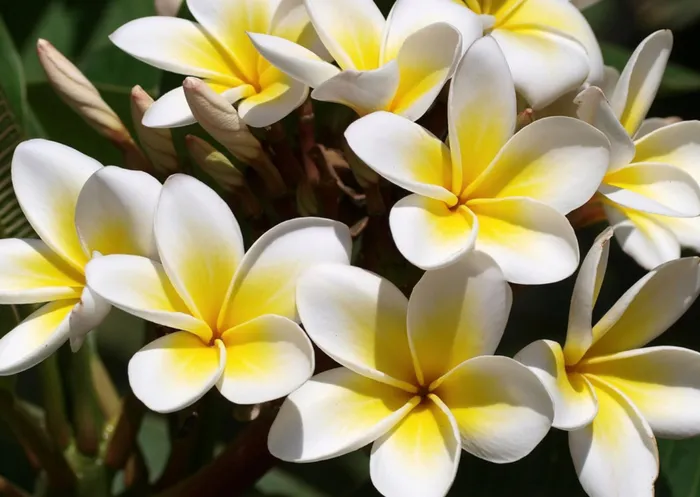The hush of a tranquil garden

Fragrant frangipanis are a summer favourite sure to add glimmer to a garden ideal for quiet reflection. Fragrant frangipanis are a summer favourite sure to add glimmer to a garden ideal for quiet reflection.
“In the ancient world it was ever the greatest of the emperors and the wisest of the philosophers that sought peace and rest in a garden.” – Sir George Sitwell
In the midst of the busy holiday season, I stole a few precious moments to reflect quietly on a bench under a tree at the bottom of my garden.
Within minutes a fat, speckled baby robin chat flew down, brushed my knee briefly; thinking better of it, it landed on a rock less than a metre away. We observed each other silently for a few golden moments before it dived into the shrubbery. Then I noticed a tiny orange-legged lizard sunning itself within touching distance. This, I’ve learnt, is the Red-sided Skink, for the male also has an orange lateral stripe when in breeding condition. Mine was an entrancing male.
This creature is endemic to South Africa and occurs throughout the coastal regions of the southern and eastern Cape. I had never seen it in all the 34 years I had gardened in Bergvliet, though the much larger Cape Skink was often around. Those few tranquil moments relaxing and enjoying the company of some of my garden’s denizens enriched my entire day.
Last year marked the 20th anniversary of the Quiet Garden Movement, founded in England by Anglican priest Philip Roderick. He said: “It is about giving people permission to step back and experience a sense of stillness and wonderment. We have all become so hyperactive, our lives have become so sound-soaked, we cannot hear the sound of a falling flower in a quiet garden.”
There are about 300 members of this movement, who make their green spaces available to other lovers of beauty and tranquillity. Their gardens range from busy London boroughs to secluded country areas. As solicitor Michael Chapman, the owner of a hectare of garden, explains: “We are lucky enough to have this lovely garden. To hog it all to ourselves would be like keeping an Old Master tucked away in the basement.”
In one’s own garden, there are three colours that promote a sense of tranquillity. Foremost is green, in all its many shades and forms, from soft, feathery ferns, to bold architectural shapes like that of the strelizia. Blue makes a wonderful, gentle colour contrast to the strident hues of summer annuals. This season, for instance, a pot of pale “Barley Blue” agapanthuses with no fewer than 16 blooms, has captured centre stage on my patio. As for white flowers, these are my summer favourites, for they glimmer in the garden, from fragrant frangipanis to frilly Shasta daisies, one cultivar of which has the fun name of “Crazy Daisy”. - Cape Argus